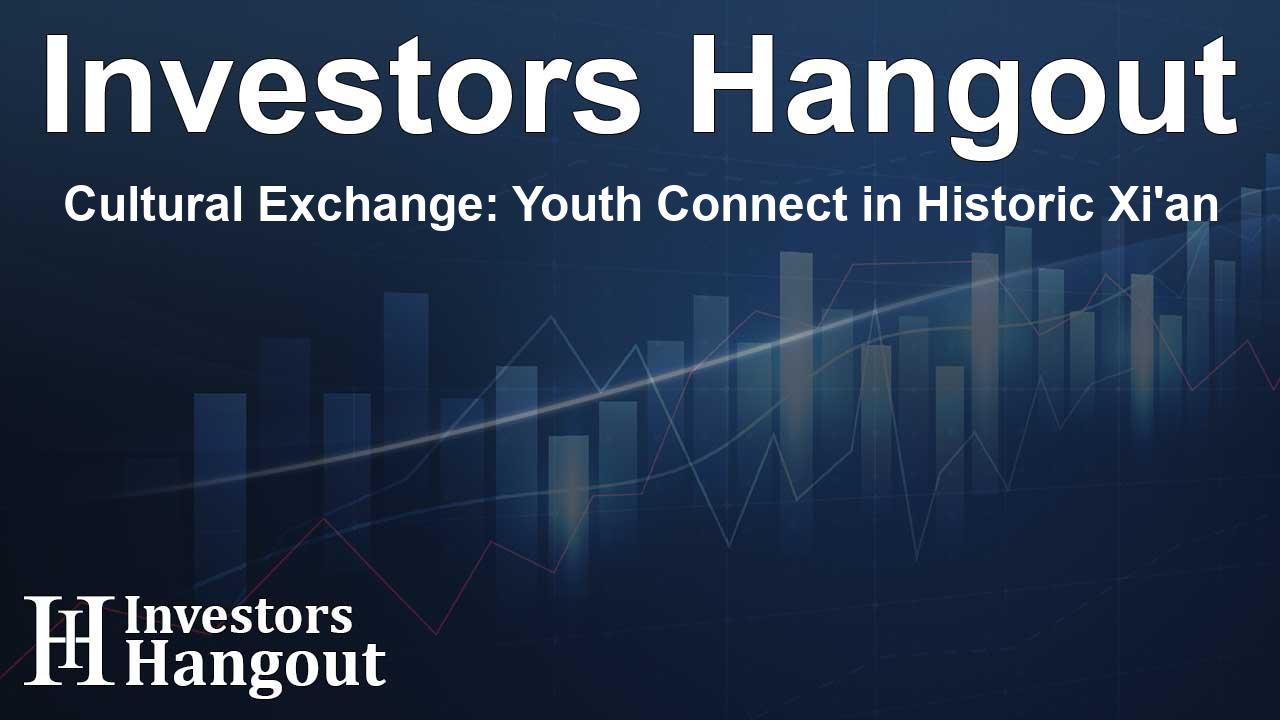Bridging Cultures: A Youth Dialogue in Xi'an
This summer, a unique initiative brought together a group of enthusiastic young delegates from two distant yet intertwined cultures: the U.S. and China. They gathered in the historic city of Xi'an to participate in the Across the Pacific: China-U.S. Youth Dialogue for a Shared Future program, facilitated by the fifth iteration of the China-America Student Conference. This event aimed to create connections between these two nations through shared experiences and cultural exchange.
Exploring Culinary Heritage
As part of the program, participants visited Xi'an Jiaotong University for an immersive session titled From University to the World. Here, they engaged with local students and professors, discussing a blend of topics, from contemporary music trends to deeply rooted culinary traditions. One enlightening lecture by Professor Peng Fengling delved into the intricacies of Chinese culinary culture, illustrating how food transcends mere sustenance and embodies profound social and cultural meanings.
Dahlia Townley-Bakewell, a U.S. delegate, reflected on the lecture, sharing her newfound understanding of shared meals that go beyond practicality. "I learned that the round dining tables symbolize reunion and equality among diners," she mused, highlighting the essence of togetherness prevalent in Chinese dining traditions.
Strengthening Friendships Through Dialogue
The dynamic exchanges between these young delegates and their Chinese counterparts allowed them to share personal stories and insights about their diverse cultures. Liu Yuxuan, another participant, noted the significance of fostering friendships through honest discussions, acknowledging the importance of cultural understanding in building bridges.
Experiencing History Up Close
Beyond classroom discussions, the delegates embarked on a remarkable journey through Xi'an's rich history. Their exploration included visits to Huaqing Palace, a regal site from the Tang Dynasty, and a chance to witness the artistry of the Terracotta Army at Emperor Qinshihuang's Mausoleum Site Museum. These historical sites offered that special glimpse into ancient Chinese civilization, igniting the imagination of the youth as they connected the past to the present.
They even had the opportunity to don traditional hanfu, the clothing of the Han people, creating one-of-a-kind memories as they walked the grounds of historical landmarks. This experience not only immersed them in the aesthetics of the culture but also deepened their appreciation for customs that date back thousands of years.
Reflections on Cultural Identity
Participants expressed how wearing hanfu transformed their experience. Henry Frederick Gregory Collins spoke of a sense of empowerment and connection to ancient philosophies, envisioning himself as a blend of a warrior and a thinker. Similarly, Justin Isaiah Seymour Welch reflected on how the attire allowed him to feel a palpable connection to Xi’an's historical tapestry.
Visuals of Tradition and Modernity
The group's exploration concluded with a visit to the iconic Giant Wild Goose Pagoda. Here, they admired how ancient architecture harmonizes with contemporary life, illustrating the seamless coexistence of tradition and modernity. Welch commented on the beauty found at the Bell Tower, where the historic structure stands proudly within a bustling urban environment.
Frequently Asked Questions
What is the purpose of the youth dialogue program?
The program aims to foster cultural exchange and understanding between youth from China and the U.S. through shared experiences and discussions on various topics.
How did the youth experience Chinese culinary culture?
Delegates attended lectures on culinary traditions, participated in discussions about dining practices, and reflected on the deeper meanings behind food culture in China.
What historical sites did the delegates visit in Xi'an?
The delegates explored Huaqing Palace and the Terracotta Army, gaining insights into ancient Chinese civilization and visiting culturally significant landmarks.
How did wearing traditional attire affect their experience?
Wearing hanfu allowed participants to connect more deeply with Chinese culture and its history, enriching their experience and offering a unique perspective.
What role did discussions play in their cultural exchange?
Conversations between U.S. and Chinese delegates helped build friendships, exchange personal stories, and understand cultural differences, which is key to diplomacy and mutual respect.
About The Author
Contact Ryan Hughes privately here. Or send an email with ATTN: Ryan Hughes as the subject to contact@investorshangout.com.
About Investors Hangout
Investors Hangout is a leading online stock forum for financial discussion and learning, offering a wide range of free tools and resources. It draws in traders of all levels, who exchange market knowledge, investigate trading tactics, and keep an eye on industry developments in real time. Featuring financial articles, stock message boards, quotes, charts, company profiles, and live news updates. Through cooperative learning and a wealth of informational resources, it helps users from novices creating their first portfolios to experts honing their techniques. Join Investors Hangout today: https://investorshangout.com/
The content of this article is based on factual, publicly available information and does not represent legal, financial, or investment advice. Investors Hangout does not offer financial advice, and the author is not a licensed financial advisor. Consult a qualified advisor before making any financial or investment decisions based on this article. This article should not be considered advice to purchase, sell, or hold any securities or other investments. If any of the material provided here is inaccurate, please contact us for corrections.

